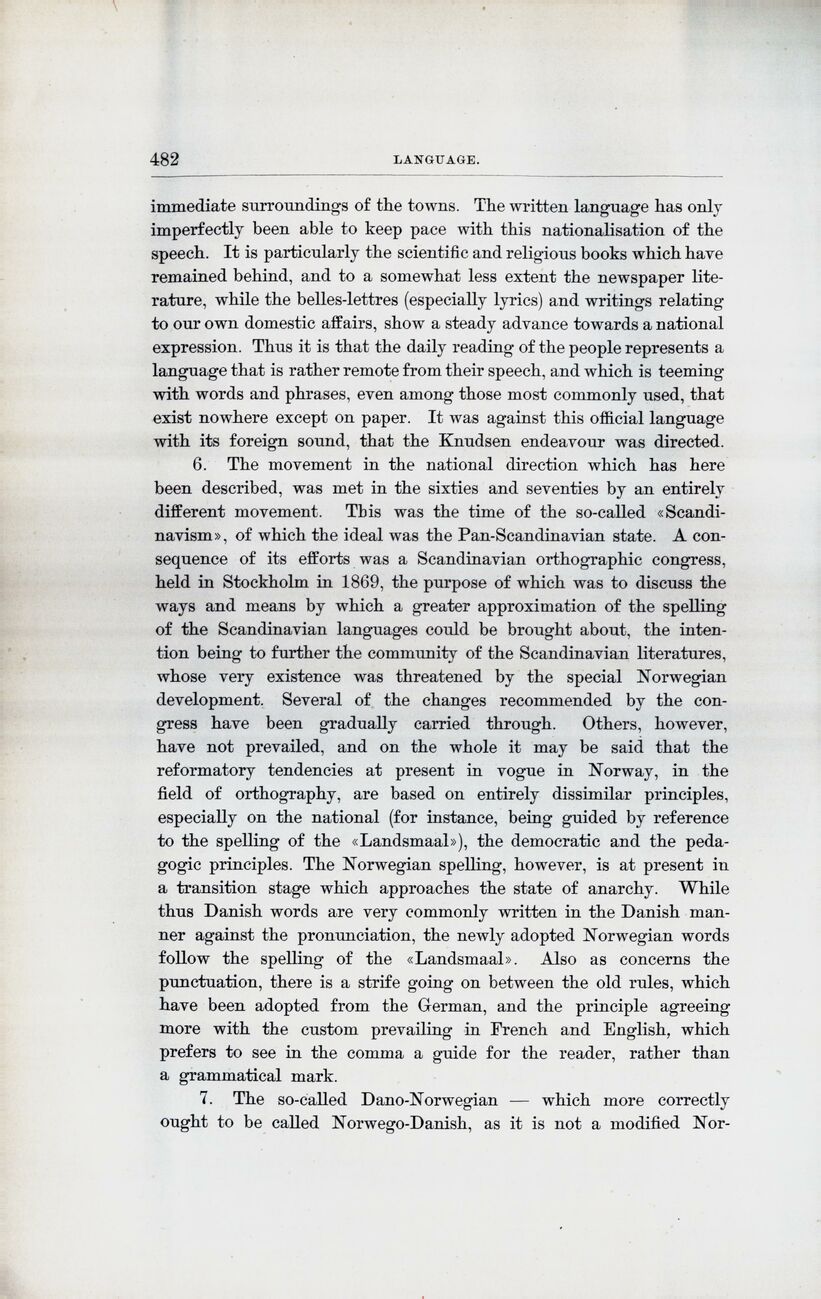
Full resolution (JPEG) - On this page / på denna sida - Language, by Hj. Falk

<< prev. page << föreg. sida << >> nästa sida >> next page >>
Below is the raw OCR text
from the above scanned image.
Do you see an error? Proofread the page now!
Här nedan syns maskintolkade texten från faksimilbilden ovan.
Ser du något fel? Korrekturläs sidan nu!
This page has been proofread at least once.
(diff)
(history)
Denna sida har korrekturlästs minst en gång.
(skillnad)
(historik)
immediate surroundings of the towns. The written language has only
imperfectly been able to keep pace with this nationalisation of the
speech. It is particularly the scientific and religious books which have
remained behind, and to a somewhat less extent the newspaper
literature. while the belles-lettres (especially lyrics) and writings relating
to our own domestic affairs, show a steady advance towards a national
expression. Thus it is that the daily reading of the people represents a
language that is rather remote from their speech, and which is teeming
with words and phrases, even among those most commonly used, that
exist nowhere except on paper. It was against this official language
with its foreign sound, that the Knudsen endeavour was directed.
6, The movement in the national direction which has here
been described, was met in the sixties and seventies by an entirely
different movement. This was the time of the so-called
«Scandinavism», of which the ideal was the Pan-Scandinavian state. A
consequence of its efforts was a Scandinavian orthographic congress,
held in Stockholm in 1809, the purpose of which was to discuss the
ways and means by which a greater approximation of the spelling
of the Scandinavian languages could be brought about, the
intention being to further the community of the Scandinavian literatures,
whose very existence was threatened by the special Norwegian
development. Several of the changes recommended by the
congress have been gradually carried through. Others, however,
have not prevailed, and on the whole it may be said that the
reformatory tendencies at present in vogue in Norway, in the
field of orthography, are based on entirely dissimilar principles,
especially on the national (for instance, being guided by reference
to the spelling of the «Landsmaal»), the democratic and the
pedagogic principles. The Norwegian spelling, however, is at present in
a transition stage which approaches the state of anarchy. While
thus Danish words are verv commonly written in the Danish
manner against the pronunciation, the newly adopted Norwegian words
foliow the spelling of the «Landsmaal». Also as concerns the
punctuation, there is a strife going on between the old rules, which
have been adopted from the German, and the principle agreeing
more with the custom prevailing in French and English, which
prefers to see in the comma a guide for the reader, rather than
a grammatical mark.
7. The so-called Dano-Norwegian — which more correctly
ought to be called Norwego-Danish, as it is not a modified
<< prev. page << föreg. sida << >> nästa sida >> next page >>